Sea level rise already a reality in portions of Alaska
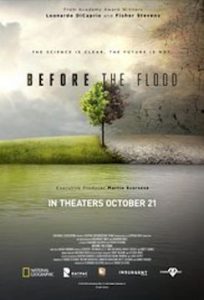 One of the more impactful documentaries screened at the 3rd Annual Bonita Springs International Film Festival was Before the Flood. Directed by Fisher Stevens, the climate change documentary follows Academy Award-winning actor and U.N. Messenger of Peace Leonardo DiCaprio on a three-year journey during which he interviews individuals from every facet of society in both developing and developed nations to discover what must be done today and in the future to prevent catastrophic disruption of life on our planet. One of the topics discussed in the film is the threat of sea level rise as a consequence of rising temperatures resulting from greenhouse gas emissions.
One of the more impactful documentaries screened at the 3rd Annual Bonita Springs International Film Festival was Before the Flood. Directed by Fisher Stevens, the climate change documentary follows Academy Award-winning actor and U.N. Messenger of Peace Leonardo DiCaprio on a three-year journey during which he interviews individuals from every facet of society in both developing and developed nations to discover what must be done today and in the future to prevent catastrophic disruption of life on our planet. One of the topics discussed in the film is the threat of sea level rise as a consequence of rising temperatures resulting from greenhouse gas emissions.
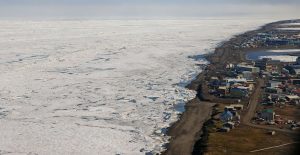 The world is already witnessing the inexorable loss of land and habitat to sea level rise. In April of 2016, the world learned that five tiny islands in the Soloman Archipelago have disappeared amid rising seas and erosion. A month later, UNESCO warned that projected sea level rise threatens more than a dozen World
The world is already witnessing the inexorable loss of land and habitat to sea level rise. In April of 2016, the world learned that five tiny islands in the Soloman Archipelago have disappeared amid rising seas and erosion. A month later, UNESCO warned that projected sea level rise threatens more than a dozen World 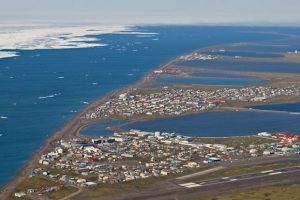 Heritage sites including Venice, Italy, the Sydney Opera House, the Galapagos Islands, Stonehenge, Easter Island and the Statue of Liberty. But as the documentary underscores, because of a disinformation campaign being waged by special interests including the oil industry, the Koch brothers and the coal industry, many Americans believe
Heritage sites including Venice, Italy, the Sydney Opera House, the Galapagos Islands, Stonehenge, Easter Island and the Statue of Liberty. But as the documentary underscores, because of a disinformation campaign being waged by special interests including the oil industry, the Koch brothers and the coal industry, many Americans believe 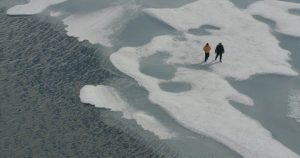 that the hype about climate change is either fabricated, hyperbolic or just too futuristic to worry about.
that the hype about climate change is either fabricated, hyperbolic or just too futuristic to worry about.
But try telling that to residents of Barrow, Alaska, where the thinning and loss of artic ice is wreaking havoc on the indigenous people who have made their living whaling for time out of 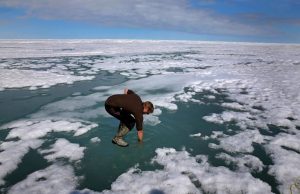 memory.
memory.
In Barrow, the sea is already moving inland to the consternation of the town’s mayor, Robert C. Harcharek, who has stated publicly that if he could, he would move the entire town about a mile inland from its current location in order to compensate for losses the town has experienced as a result of rising tides 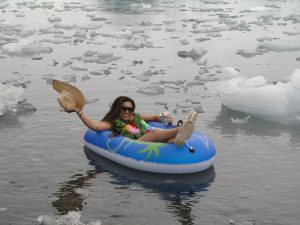 and sea levels. But that’s not likely to occur any time soon given that Barrow has invested more than $1 Billion in infrastructure – in the form of roads, public buildings, schools and the like – which cannot be easily replaced. But if temperatures and sea level continue to rise at the pace they have over just the past ten years, the residents of Barrow may soon find themselves in the country’s first wave of climate refugees.
and sea levels. But that’s not likely to occur any time soon given that Barrow has invested more than $1 Billion in infrastructure – in the form of roads, public buildings, schools and the like – which cannot be easily replaced. But if temperatures and sea level continue to rise at the pace they have over just the past ten years, the residents of Barrow may soon find themselves in the country’s first wave of climate refugees.
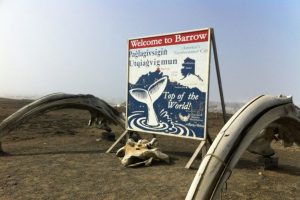 Lest you think Barrow’s problems too remote to warrant your concern, scientists warn that there’s new evidence coming in that links the rapid warming taking place in the Arctic to extreme weather events in highly populated latitudes far south such as the flash floods in West Virginia, record highs in the southwest, wildfires in California and hurricanes on the order of Harvey in Texas and
Lest you think Barrow’s problems too remote to warrant your concern, scientists warn that there’s new evidence coming in that links the rapid warming taking place in the Arctic to extreme weather events in highly populated latitudes far south such as the flash floods in West Virginia, record highs in the southwest, wildfires in California and hurricanes on the order of Harvey in Texas and 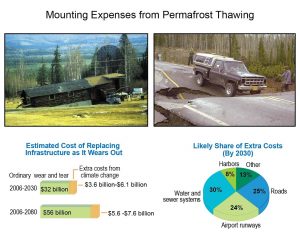 Irma in Florida.
Irma in Florida.
“The Arctic as a whole has gotten warmer and wetter since the start of the 21st century, a change attributed to sea-ice reduction,” Yereth Rosen wrote in 2016 in the Alaska Dispatch News. “Other forces like reduced snow cover — which this year hit a near-record June low in the Northern Hemisphere – and cloud formation amplify the warming.”
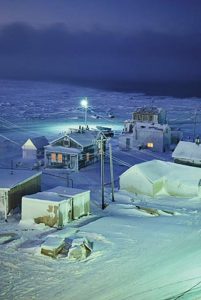 Scientists with the National Oceanic & Atmospheric Administration (NOAA) and United States Geological Survey (USGS) are also concerned with the loss of Alaska’s glaciers. While the Greenland ice sheet and Antarctica dwarf Alaska’s glaciers, the latter are disproportionately contributing to sea level rise, scientists say. For example, Shad O’Neel of the USGS points out that while mountain glaciers hold only 1 percent of the world’s glacial ice, they are contributing 30 percent of the water that is currently increasing sea levels worldwide. In all, Alaska’s glaciers are losing 75 billion tons of ice a year, and almost all of that comes from the glaciers on land rather than those spilling into tidewater.
Scientists with the National Oceanic & Atmospheric Administration (NOAA) and United States Geological Survey (USGS) are also concerned with the loss of Alaska’s glaciers. While the Greenland ice sheet and Antarctica dwarf Alaska’s glaciers, the latter are disproportionately contributing to sea level rise, scientists say. For example, Shad O’Neel of the USGS points out that while mountain glaciers hold only 1 percent of the world’s glacial ice, they are contributing 30 percent of the water that is currently increasing sea levels worldwide. In all, Alaska’s glaciers are losing 75 billion tons of ice a year, and almost all of that comes from the glaciers on land rather than those spilling into tidewater.
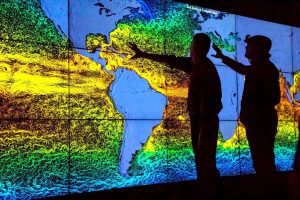 And glacial melt affects more than sea levels. The increasing amount of fresh water pouring off them changes marine salinity and currents and, ultimately, circulation in the Arctic Ocean, O’Neel said.
And glacial melt affects more than sea levels. The increasing amount of fresh water pouring off them changes marine salinity and currents and, ultimately, circulation in the Arctic Ocean, O’Neel said.
This, and more, was covered in detail in Before the Flood, which is one of the reasons the film was perhaps the 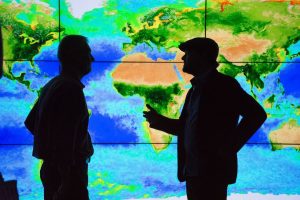 most timely documentary included in this year’s edition of the Bonita Springs International Film Festival.
most timely documentary included in this year’s edition of the Bonita Springs International Film Festival.
January 26, 2018.
RELATED POSTS.
- ‘Before the Flood’ delivers sobering climate change message to BIFF audience
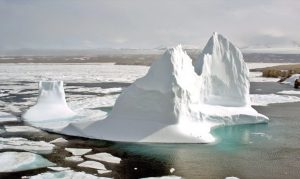 Sea level rise could inundate 1.9 million U.S. homes
Sea level rise could inundate 1.9 million U.S. homes- Rising sea levels could threaten Statue of Liberty and other historic sites
- Vince Giordano and The Nighthawks documentary to open Bonita International Film Festival
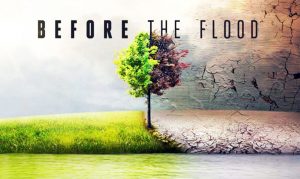 Cineastes to don flapper dresses and dancing shoes for BIFF opening night red carpet gala
Cineastes to don flapper dresses and dancing shoes for BIFF opening night red carpet gala- BIFF opening night after-party perfect venue for practicing East and West Coast Swing
- Vince Giordano documentary furthers BIFF tradition of focusing on dance at festival opening
- A dance party broke out at the BIFF opening night VIP after-party
- BIFF includes two Elizabeth D’Onofrio workshops on Saturday
- ‘Piper’ an achievement in photo-realist animated storytelling














 Tom Hall is both an amateur artist and aspiring novelist who writes art quest thrillers. He is in the final stages of completing his debut novel titled "Art Detective," a story that fictionalizes the discovery of the fabled billion-dollar Impressionist collection of Parisian art dealer Josse Bernheim-Jeune, thought by many to have perished during World War II when the collection's hiding place, Castle de Rastignac in southern France, was destroyed by the Wehrmacht in reprisal for attacks made by members of the Resistance operating in the area. A former tax attorney, Tom holds a bachelor's degree as well as both a juris doctorate and masters of laws in taxation from the University of Florida. Tom lives in Estero, Florida with his fiancee, Connie, and their four cats.
Tom Hall is both an amateur artist and aspiring novelist who writes art quest thrillers. He is in the final stages of completing his debut novel titled "Art Detective," a story that fictionalizes the discovery of the fabled billion-dollar Impressionist collection of Parisian art dealer Josse Bernheim-Jeune, thought by many to have perished during World War II when the collection's hiding place, Castle de Rastignac in southern France, was destroyed by the Wehrmacht in reprisal for attacks made by members of the Resistance operating in the area. A former tax attorney, Tom holds a bachelor's degree as well as both a juris doctorate and masters of laws in taxation from the University of Florida. Tom lives in Estero, Florida with his fiancee, Connie, and their four cats.